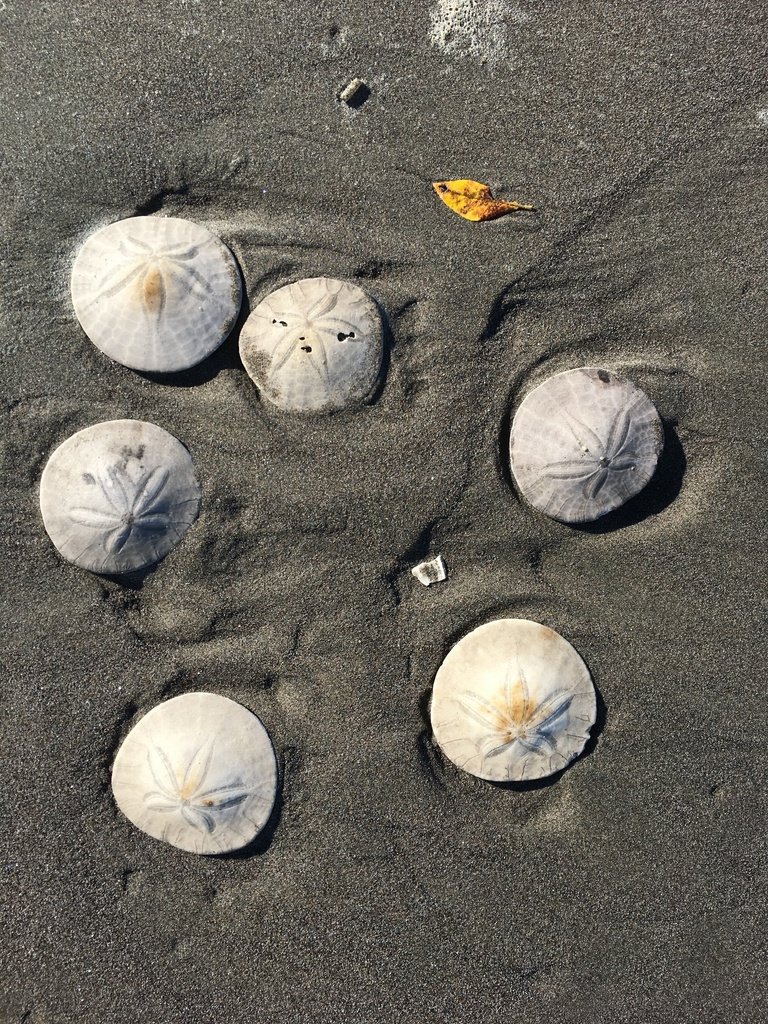Eccentric Sand Dollar (Dendraster excentricus)
Eccentric sand dollar tests (AKA skeletons) (photo credit: Molly Sultany)
Live juvenile sand dollar (photo credit: Lauren Rice)
Description: The shells of eccentric sand dollars that are no longer living are often found along shorelines. These shells are white and smooth, while living eccentric sand dollars are grayish-brown and covered in little spines, which are hair-like and not dangerous (only about 2 millimeters in length). Sand dollars are echinoderms and they use these spines to burrow, eat, and move. Essentially, sand dollars are like flattened sea urchins: both have a shell (called a test) and are covered in spines. The star-shaped pattern on top of eccentric sand dollars is off-center (their species name excentricus means “off-center”). In this star-shaped pattern are little holes from which specialized tube feet emerge from in order to respirate, or breathe.
Habitat: These sand dollars are found in the intertidal and subtidal zones, typically in sandy areas. The ones living in the intertidal zone will bury underneath the sand when the tide goes out to retain moisture until it returns.
Diet: A sand dollar’s mouth is a little hole located in the middle of its underside. When they lie flat underwater, they feed on detritus and plankton. When they are positioned vertically underwater, they catch prey and algae by using their spines and tube feet.
Tide Pool Tidbits:
Eccentric sand dollars live in aggregates—or large groups—underwater and position themselves based on water currents. When they form these groups, they either lie flat or stick up out of the ground sideways, partially buried.
The average eccentric sand dollar is about 10 centimeters in diameter and they can live for up to 6-8 years! Their age can be determined by counting the growth rings on its shell that surround the star-shaped pattern, similar to counting the rings inside a tree log to determine its age.
Predators of sand dollars include crabs, sea stars, and various fishes.
References: Central Coast Biodiversity, Oregon Coast Aquarium



